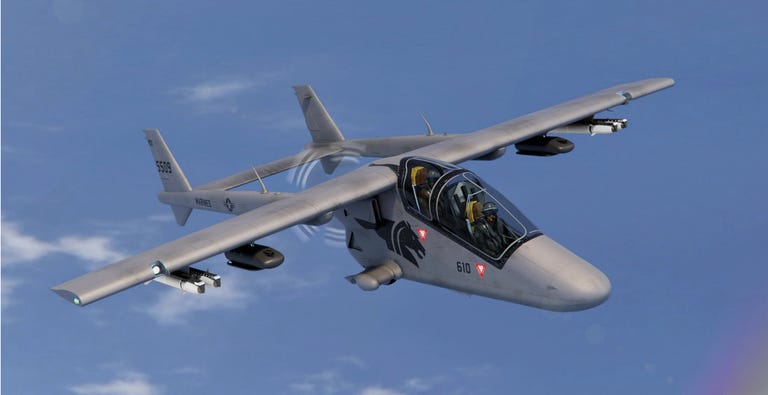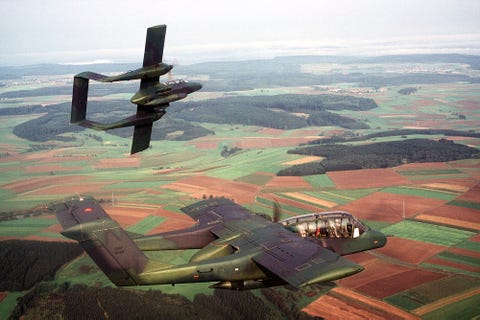America’s Next Warplane Could Be African
Africa’s first warplane seeks to enter the Air Force’s OA-X aircraft program.
By Kyle Mizokami

AEROSUD
America’s next warplane could come from a rather unlikely place: Africa. The South African Mwari aircraft, the first warplane entirely designed and developed in Africa, has been rebranded as the Bronco II for the American market and is seeking to join the U.S. Air Force’s ongoing competition to pick a new light attack aircraft.
Originally known as, or AHRLAC, or Advanced High Performance, Reconnaissance Light Air Craft, Mwari was developed by two South African companies, Aerosud and the Paramount Group, as an inexpensive but capable aircraft to equip Africa’s air forces. The aircraft first flew in 2014 and in 2016 the developers announced an agreement with U.S. defense giant Boeing to develop an “integrated mission system” for the Mwari, with an emphasis on intelligence, surveillance, and reconnaissance (ISR) and light strike. This likely includes such Boeing weapons as the GPS-guided Small Diameter Bomb.
The Mwari/Bronco II packs a lot of potential. The high wing, push propeller aircraft is powered by a single Pratt & Whitney engine PT6-66B engine providing 950 horsepower. The aircraft has a crew of two, can carry a payload of 1,760 pounds, and has a top speed in excess of 272 knots. It has a ceiling of 31,000 feet and can take off in just 1,800 feet of landing strip. It can stay aloft for up to 7.5 hours.

U.S. Air Force Broncos flying over Germany, 1981.
GETTY IMAGES
The Bronco II is named after the OV-10 Bronco, a light attack and observation aircraft used by the U.S. Navy, U.S. Air Force, and U.S. Marine Corps as late as 1991’s Operation Desert Storm. The OV-10, incidentally also made by Boeing, was a jack of all trades capable of doing everything from coordinating air and artillery strikes to acting as a gunship in support of ground forces.
The Bronco II’s backers seek to enter the airplane in the U.S. Air Force’s OA-X competition, which the service hopes will produce one winner to provide ISR and close air support duties in low-intensity conflicts. So far, the leading contestants in the program are the Sierra Nevada/Embraer A-29 Super Tucano and the Textron Aviation AT-6. The Air Force plans to purchase up to 300 aircraft.
No comments:
Post a Comment